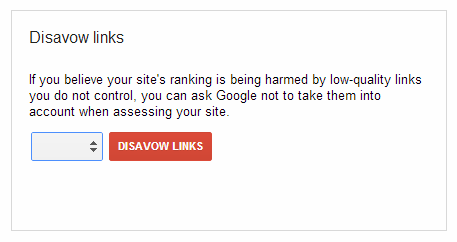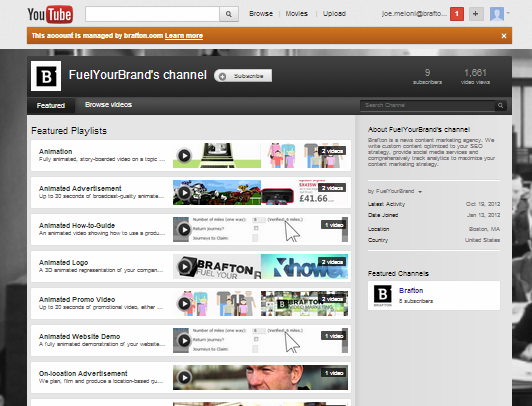It seems like the definition of SEO changes every day.
Last week, Google offered sites some guidance for recovery in the wake of penalties for low-quality, inorganic links. Meanwhile, comments from Cutts and a former Google employee suggested that organizations concerned with SEO should start calling their strategies User Experience Optimization. Web users want relevant content, and Google focuses on what its users need. Developing a site with content and features that appeal to people is the best way to establish a strong presence in Google search.
The road to SEO recovery
On Tuesday, Cutts and Google announced their new disavow links tool, which they designed to help sites improve their standing in search. To discuss the feature and educate webmasters, Cutts released a Webmaster Help video as well. His most important points Cutts dealt with the types of sites that stand to benefit from disavowing links. Currently, search marketers developing quality content but struggling to drastically improve their search ranking may look at the feature and think it’s for them given the ability to eliminate links that don’t add value. However, Cutts pointed out that only webmasters who have paid for links or engaged other webspam tactics should use it. More often than not, Google will send link warnings to sites that stand to benefit from disavowal.
“There’s been a little bit of a brouhaha in the last few months about people wanting to clean up their backlinks. But if you’re an average mom and pop doing normal sorts of things and nothing that’s egregious or aggressive SEO … this is not a tool you should need to use,” Cutts said in the video.

Brafton reported that the disavow links tool represents another step for sites actively trying to rebuild their presence in search. Earlier this year, Google allowed marketers to download lists of their most recent inbound links. Developing a stronger understanding of links that hurt search standing will improve a site’s overall SEO.
This week’s conversation regarding link disavowal came after a busy few weeks for Google in terms of algorithm updates. Sites that experience penalties from any of these adjustments must start the process of recovery soon. Cutts urged marketers to attempt to remove the links impacting their search standing manually prior to petitioning for link disavowal. Communicating with the owners of domains including these low-quality links is the ideal starting point.
Any marketers who have bought links in the past may wonder why this practice is so heavily frowned upon. The practice devalues natural link building and merit-based endorsements that countless websites have accomplished by producing high-quality, niche content.
Essentially, paid links are cheating.
Further cementing Cutts’ point, an interview released last week included insights from a former Google employee. Andre Weyeher, who worked with Google for nearly five years, spoke with Australian web marketer James Norquay, saying paid links will not help search presence.
“At this stage a webmaster is out of his (or her) mind to still rely on techniques that were common practice eight months ago. Purchasing links was always risky but resembled a game of roulette, you could get caught but many people also got away with it. Today it’s not a question if you get caught, it’s merely a question of when you’ll get caught.” – Andre Weyher, former Google employee
“At this stage a webmaster is out of his (or her) mind to still rely on techniques that were common practice eight months ago,” Weyher said. “Purchasing links was always risky but resembled a game of roulette, you could get caught but many people also got away with it. Today it’s not a question if you get caught, it’s merely a question of when you’ll get caught.”
Long-term content strategies for SEO success
Brafton reported there is no easy road to strong SEO. Developing a content marketing strategy that produces a site loaded with interesting and useful information for prospects takes time. Any shortcuts will result in a penalty. Weyher said even Google employees understand the temptation to seek out these spam tactics, but they just don’t work.
A large portion of marketers relying on SEO have avoided quick fixes despite the gradual process improving search standing and attracting website visitors. MarketingSherpa reported last week that 72 percent of marketers consider greater website traffic a primary objective of SEO, while 62 percent pointed to lead generation.
Many of these marketers said they were frustrated by their slow progress toward these goals, but they plan to continue with their strategies. Brafton reported that more robust ROI capability may help many determine their success more easily or pinpoint areas where they need to improve.
Video marketing continues maturation
As video viewership rises, the content type continues to mature for both users and marketers. AYTM released a report last week that suggests more than 90 percent of Americans access video content. Whether they’re streaming a favorite television show or learning about a brand’s products and services, consumers enjoy engaging with video on the web.

More than 27 percent of Americans access video daily, and more than 23 percent said they do so at least a few times per week. Perhaps the most important element of study, however, is the interest in YouTube Channels. Marketers using video content can create Channels to provide prospects with easy access to their video content. According to the survey, 22 percent of consumers said they follow “many” channels on the site, and more than 24 percent keep track of one or two.
Brafton reported that YouTube is an ideal platform for video marketing since companies can post their content for organic interaction or pay for pre-roll advertising.
More than 30 percent of AYTM respondents said they access video through search, and 61 percent find content through YouTube. With so many searching on YouTube, the way the site organizes data is increasingly important. Last week, YouTube announced it will rank videos based on time watched, rather than total views. Engaging video content that keeps users on the page is more likely to drive visibility with the new ranking signal. Brafton reported that consistent improvement of YouTube video ranking and marketing measurement can help YouTube attract more marketers, while the robust data helps organizations improve strategies.
For many, this week will be spent responding last week’s adjustments or deciding if it’s necessary. However, as the last few weeks have proved, Google may have may have more updates in store.



